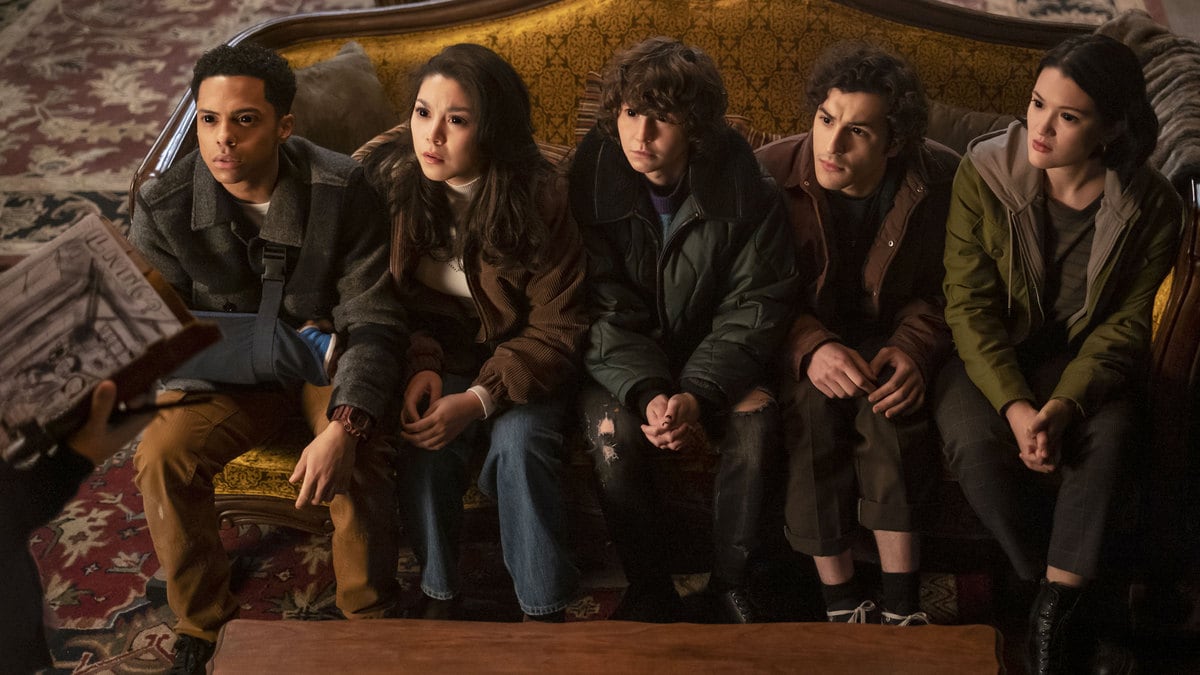You have to hand it to R.L. Stine: In his years as the reigning creator of spooky stories for young people, the man has produced such a flood of content (formerly known as books) that even today’s IP-happy studios seem uncertain about how to handle it all.
His signature Goosebumps series has been adapted into a Fox anthology show in the ’90s, a kid-oriented Sony film franchise in the mid-2010s, and now a Sony TV series licensed to Disney+ and Hulu, which begins streaming Oct. 13. That shared custody agreement points to what’s appealingly malleable about the material—it can be aged up or down the scariness scale as needed, and still attract both kids and nostalgic old fans alike—as well as how it can trip dashing between demographics.
The new Goosebumps series, an ongoing story incorporating elements of the books rather than an anthology of adaptations, does its share of dashing, befitting a show developed by both Rob Letterman (who directed the first, Nickelodeon-friendly film) and Nicholas Stoller (who worked on Disney’s Muppet movies, but also a variety of films and shows where Seth Rogen eases into adulthood). But mostly, it goes darker than its predecessors, and not just because it’s egregiously underlit.
The first episode alone has blood (albeit in drops, not by the bucketful), a teenager’s fiery demise, and a hallucination of a football field engulfed in flames and demons. The overarching story has hints of A Nightmare on Elm Street, with a disparate group of teenagers bedeviled by the vengeful spirit of Harold Biddle, the aforementioned dead teenager, who shares a dark connection with many of their parents.

As this story develops, episodes also rewind in time to catch the younger characters interacting with a series of seemingly haunted monster-of-the-week-style objects: an instant camera that develops pictures of future disasters, freaking out star quarterback Isaiah (Zack Morris—no, not the character from Saved By the Bell); a mask that attaches itself to Isabella (Ana Yi Puig) and draws on her secret hobby as an internet troll; and a cuckoo clock that sends the desperate-to-be-liked James (Miles McKenna) into a time loop.
In one of the cleverest touches, the show takes a classic kid-lit trope—the suspicious new teacher—and makes him into a goober played by Justin Long, creepy in large part because he’s so awkward in his attempts to ingratiate himself as he moves into the old Biddle place.
Jostling against these pleasingly spooky storylines is an obvious desire to perform as the very model of a modern Disney+ show, for better and worse. This means that Goosebumps is inclusively cast with fresh-faced and likable young actors who are—at least at first—given almost nothing of substance to grasp onto. Instead, they're busied with all of the glib, cutesy dialogue the writers keep feeding them, lousy with lampshading, sarcasm, and lampshading sarcasm. This is the kind of horror show where a character calls out “Oh, cool, let’s just walk toward the creepy sound!” so everyone’s clear about how much hipper these kids are than the dumb stuff they’re doing.
As the series goes on, the characters don’t deepen so much as find blessedly fewer opportunities to banter. Unfortunately, this does not diminish their tendency to communicate in melodramatic banalities, nor the suspicion that the show is more at home with the cultural references and emotional concerns of the parents’ generation than with contemporary teen angst. (Apparently the number one issue facing today’s youths: They always make it about themselves!)
Maybe it’s churlish to complain that this Goosebumps isn’t more of an old-fashioned TV project willing to offer relatively discrete episodes. Clearly, it wants to tell a bigger, more Stephen King-ish story, not anthologize a bunch of curiosity-shop items (including, yes, a certain poor-man’s-Chucky dummy). But it’s a shame that the show’s best elements are often treated as a necessary concession to the needs of a master plot.
For a show with so many explicit ’90s connections, Goosebumps shares with some of its Disney+ cousins a seeming obliviousness about how TV shows from that era (and before) actually worked. Its best moments have to compete for attention in a series that’s relentlessly busy even in its downtime.
Goosebumps may be a flexible world, but there’s something this version doesn’t try very hard to accommodate: how the quieter spaces in between moments of mayhem can be scary, too.
Liked this review? Sign up to get our weekly See Skip newsletter every Tuesday and find out what new shows and movies are worth watching, and which aren’t.






